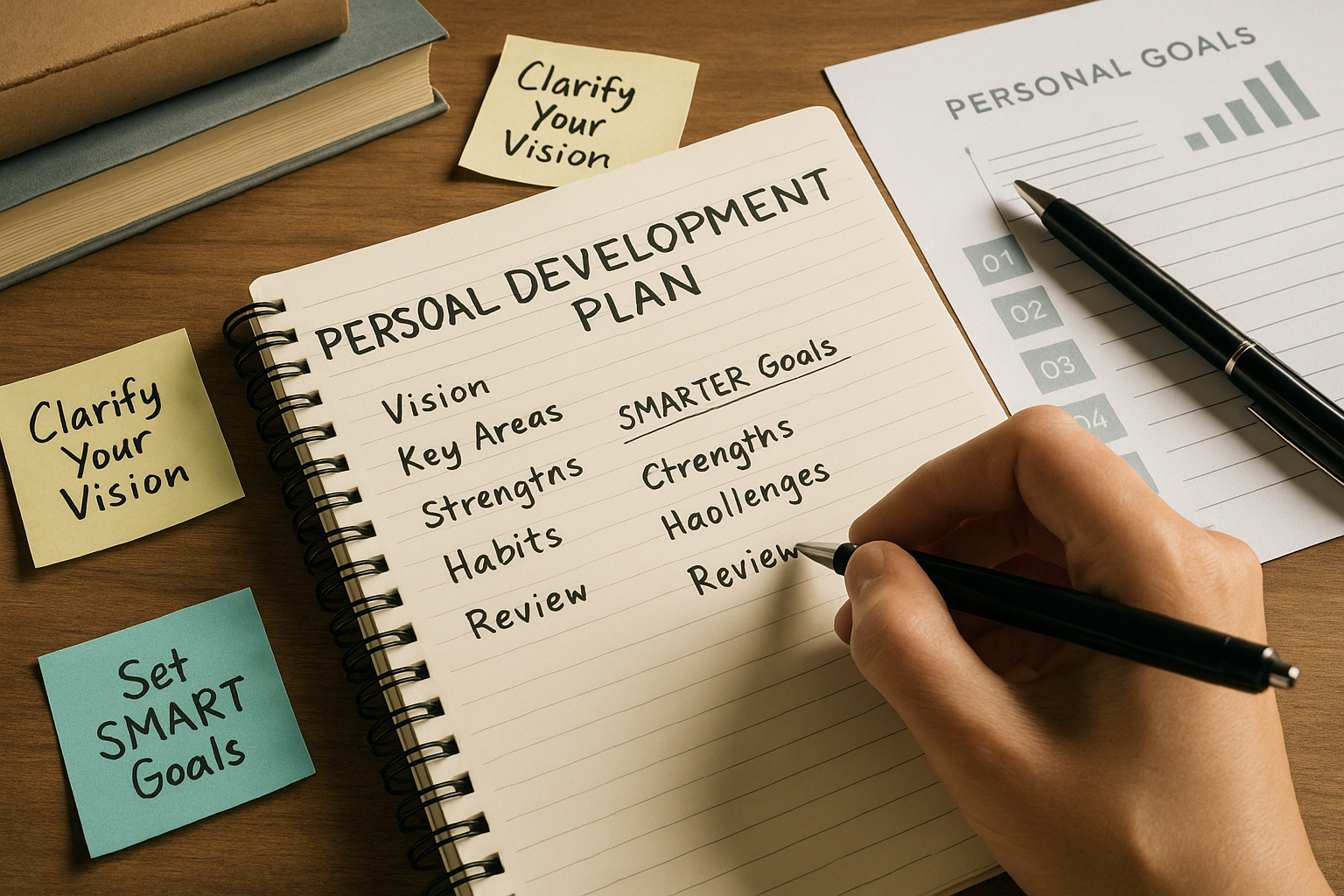Personal growth doesn’t happen by accident. If you want to evolve—mentally, emotionally, or professionally—you need direction, structure, and consistency.
That’s where a personal development plan (PDP) comes in. It’s your roadmap to becoming the version of yourself you envision.
In this article, you’ll learn how to create a realistic, flexible plan for growth that keeps you motivated and moving forward.
What Is a Personal Development Plan?
A personal development plan is a structured outline that helps you:
- Define your goals
- Identify your strengths and weaknesses
- Create strategies for improvement
- Measure progress over time
Think of it as a living document—a system you regularly check, update, and adjust.
1. Clarify Your Vision
Start with a big question:
“Who do I want to become?”
This could include:
- The kind of habits you want to build
- The career path you want to follow
- The mindset or emotional skills you want to strengthen
- The lifestyle or impact you desire
Write a paragraph that describes your ideal future self. Be honest, not perfect.
2. Define Key Areas of Growth
Break your development into 4–6 key areas. Examples:
- Career & skills
- Health & wellness
- Mindset & emotional balance
- Relationships & communication
- Financial literacy
- Creativity & hobbies
- Spirituality or purpose
This helps you stay balanced, rather than hyper-focused on just one area.
3. Set SMARTER Goals in Each Area
Use the SMARTER framework:
- Specific
- Measurable
- Achievable
- Relevant
- Time-bound
- Evaluate regularly
- Readjust as needed
Example:
“Read one personal development book per month for the next 6 months and write a 3-sentence summary after each.”
4. Identify Current Strengths and Challenges
Self-awareness is key.
- What strengths do you already have in each area?
- What skills, habits, or mindsets are holding you back?
- What patterns do you notice when you reflect honestly?
Write this out as a SWOT analysis (Strengths, Weaknesses, Opportunities, Threats).
5. Choose Daily or Weekly Habits That Align With Your Goals
Goals need systems. Choose small, consistent actions that move you forward.
Examples:
- Journaling for 10 minutes each morning
- Working on a skill for 30 minutes, 3x per week
- Practicing gratitude or mindfulness
- Scheduling a monthly check-in to reflect on progress
Track these habits visually with a habit tracker or journal.
6. Review and Reflect Regularly
Your personal development plan isn’t a one-time task—it’s a living process.
Set a reminder to:
- Review your goals weekly or monthly
- Adjust strategies that aren’t working
- Celebrate progress and lessons learned
- Set new milestones when you hit old ones
Reflection keeps your growth intentional—not accidental.
7. Make It Enjoyable and Meaningful
If your plan feels like punishment, you won’t stick with it. Include:
- Things you genuinely enjoy doing
- Goals that light you up—not just ones you “should” have
- Rewards for consistency (treats, breaks, affirmations)
This isn’t about fixing yourself. It’s about expanding yourself.
Final Thought: You Are a Work in Progress—By Design
A personal development plan isn’t about achieving perfection. It’s about creating a conscious, flexible path toward becoming your best self.
Start where you are. Dream bigger. Take small steps every day. And know that progress—even slow, messy progress—is still progress.
Because the person you’re becoming is already within you—your plan just helps bring them to life.

